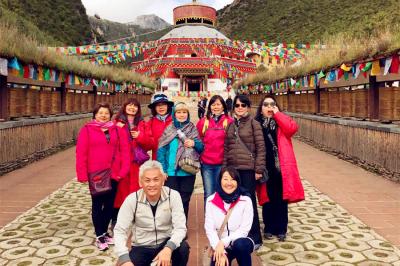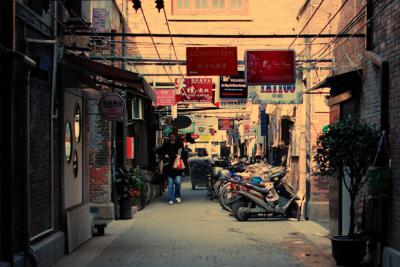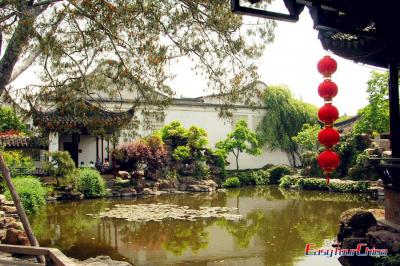Chongqing Fishing City (Diao Yu Fortress)
5 km east of Hechuan town, Chongqing city, the Fishing Fortress (Diyoucheng or Diaoyu Fortress) stands on the top of Diaoyu (fishing) Mountain, 391 meters high and embraced by Jialing River, Fujiang River, and Qujiang River on three sides. The steep, precipitous cliffs on all sides form a natural defense for the old town and make it almost impregnable. From 1243 to 1279, the military and civilian forces of Hezhou in Tongchuan Prefecture of the Southern Song Dynasty relied on the natural fortifications of Fishing City to resist the Mongol Empire army of Yuan Dynasty for 36 years.
This hilltop fortress, steeped in history and tradition, is now known as one of the great ancient battlefields of China, and has long been a holy place for history and military enthusiasts who wish to travel to Chonqing because of it. On Chongqing's Diao Yu Fortress, remnants of Southern Song military and civilian facilities remain, including 8 kilometers of ancient city walls, 8 gates, as well as artillery platforms, watchtowers, plank roads, secret passage exits, naval docks, military workshops, martial arts offices, barracks, drill grounds, imperial palaces, Tianchi Lake, and wells.
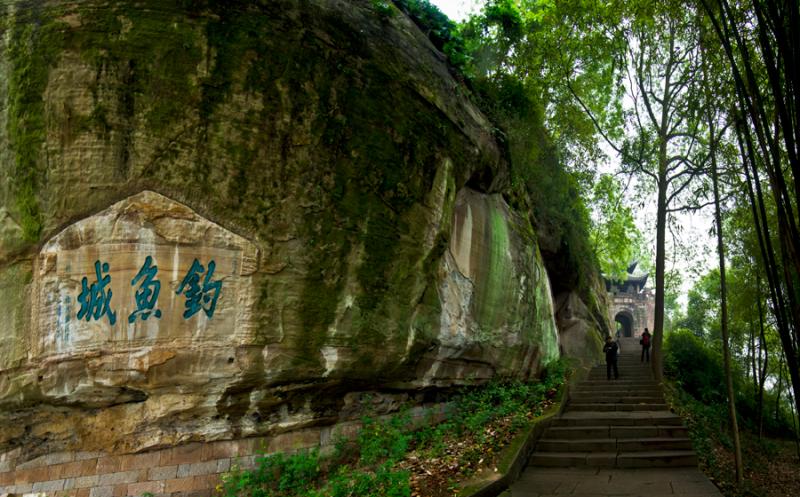
Chongqing Diaoyu Fortress Facts
Why Is It a Unbreakable Military Fortress?
Diyoucheng was built against the mountains, stretching 2,040 meters east to west and 946 meters north to south, covering an area of approximately 2.5 square kilometers. Steep cliffs averaging 27 meters in height surrounded the city, with the outer city walls constructed along the sheer precipices. The cliff outside Huguo Gate reached a height of 36 meters. The peninsula where the Diaoyu Fortress stands is flanked by rivers on three sides, with a deep, muddy ravine to the east. Occupying this fortress allowed commanding views over the perilous Three Rivers below, making it easy to defend and difficult to attack.
The Fishing City comprised inner and outer walls, with several relatively isolated sections within the outer walls connected by secret passages. Even if enemies captured a segment of the outer city, they could not seize the entire outer fortress. Moreover, they would face the towering inner city ahead and risk surprise attacks.
The Shiguan Gate and Xiaodong Gate on the southern city wall each featured a straight wall extending to the Jialing River, connecting to the southern naval dock. Similarly, the Chouqi Gate on the northern city wall had a straight wall reaching the Jialing River, linking to the northern naval dock.
Moreover, during the Battle of Fishing City, the Song forces had stockpiled substantial grain supplies there, and drinking water was never a concern. Even if the entire city were besieged, they could hold out until reinforcements arrived. With water and farmland on the mountain, they could achieve partial self-sufficiency in food, rendering them completely impervious to siege.
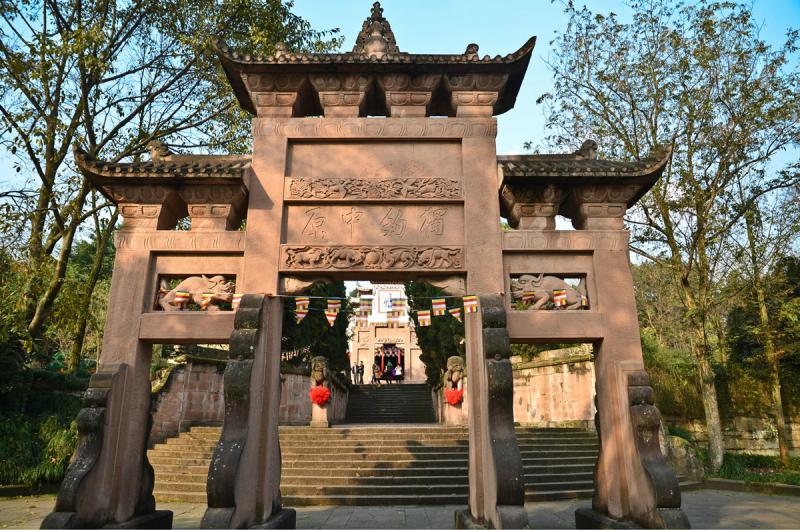
Fishing City War (Hechuan War)
Fishing Fortress was initially built in 1243 during the Southern Song Dynasty (1127–1279) as a key military town in Chongqing to defend against the Mongols from the north. The Song forces had anticipated that the Mongol army would inevitably launch a major offensive against Hezhou, the northwestern gateway to Chongqing Prefecture. To defend Chongqing, they must defend Hezhou; to defend Hezhou, they must defend Diaoyu Mountain. The war lasted for 36 years, and ended with the fall of Southern Song Dynasty and the fortress commander’s final decision to surrender to Mongols.
In 1258 (the eighth year of Emperor Chaozong of Mongolia, and the sixth year of Baoyou of the Southern Song Dynasty), after the sacrificial ceremony to Genghis Khan at Liupanshan, Mongke Khan lead the main force of Mongols to invade the South and came to Sichuan province. Although he conquered and occupied many towns and cities, the Fishing City successfully resisted the continuous attacks by the Mongols and became a renowned impenetrable fortress to withstand Mongol troops. In 1959, Mongke Khan was wounded badly in a battle when he was trying to capture Fishing City, and died soon later, which forced the immediate withdrawal of Mongol troops from all the battles in the world including those in Syria and East Asia.
In 1279, Wang Li, the garrison commander of Diaocheng under the Hezhou Provincial Governor, ended his resistance on the condition that the city would not be sacked and surrendered to the Yuan dynasty.
Fishing City War did not only extend the reign of the Southern Song Dynasty over China, but also stop the Mongolian Empire from further expanding towards Middle East and Europe. Thus many European historians laud Chongqing Fishing City as the "Mecca of the East" and "Where God broke his whip".
The Fishing City Remains
Even today after hundreds of years, the ruins of the ancient battlefield of Fishing City in Chongqing are still well kept and blend into the precipitous yet beautiful surrounding.
The historic relics include the Fishing Terrace, Thousand Buddha Cliff, Three Saints Cliff carved in 1843, the Sleeping Buddha of late Tang dynasty - the unique hanging sleeping Buddha in China, Hu Guo (Pretending the Country) Temple first built in 1155, and the Loyal Ancestors Temple originally built in 1494. These two temples have been converted into a comprehensive museum dedicated to the glorious history of the Fishing City. Besides, there are also stone inscriptions carved by formal Chinese national leaders.
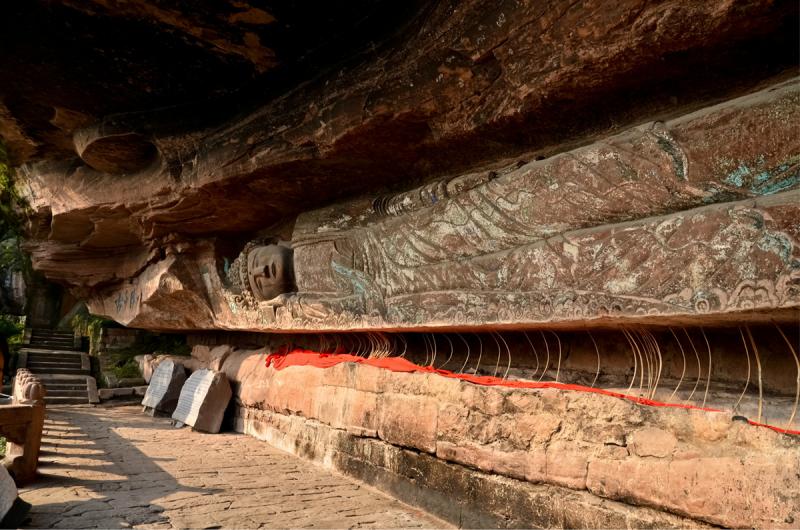
The Fanjiayan Site discovered within the ruins of the Fishing City is the site of an administrative office from the late Southern Song Dynasty. It was constructed when the provincial capital was moved to Hechuan. This administrative office site is located in the core area of the Diaoyu Fortress ruins and consists of two parts: the public office area and the garden area. Artistic and administrative items, architectural components, and weapons were unearthed from the Fan Jiyan site. Two explosive firearms - iron cannons - were also discovered and confirmed it was a government office with military defense functions.
How to Get to Diaoyucheng in Chongqing
In Chongqing, you can take Bus No. 602 or Bus No. 603 to get there.
